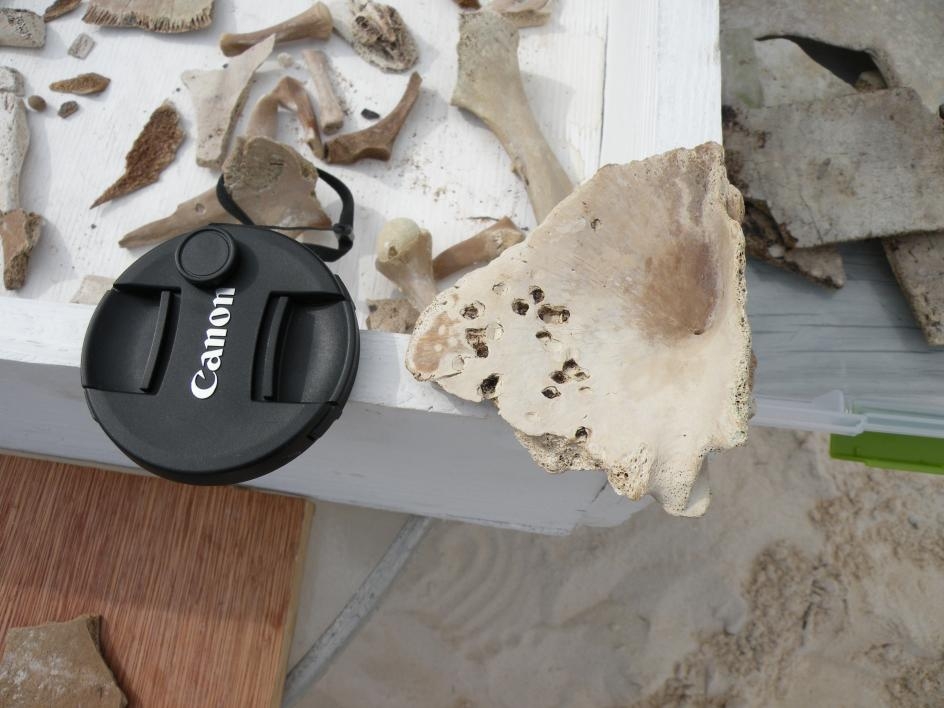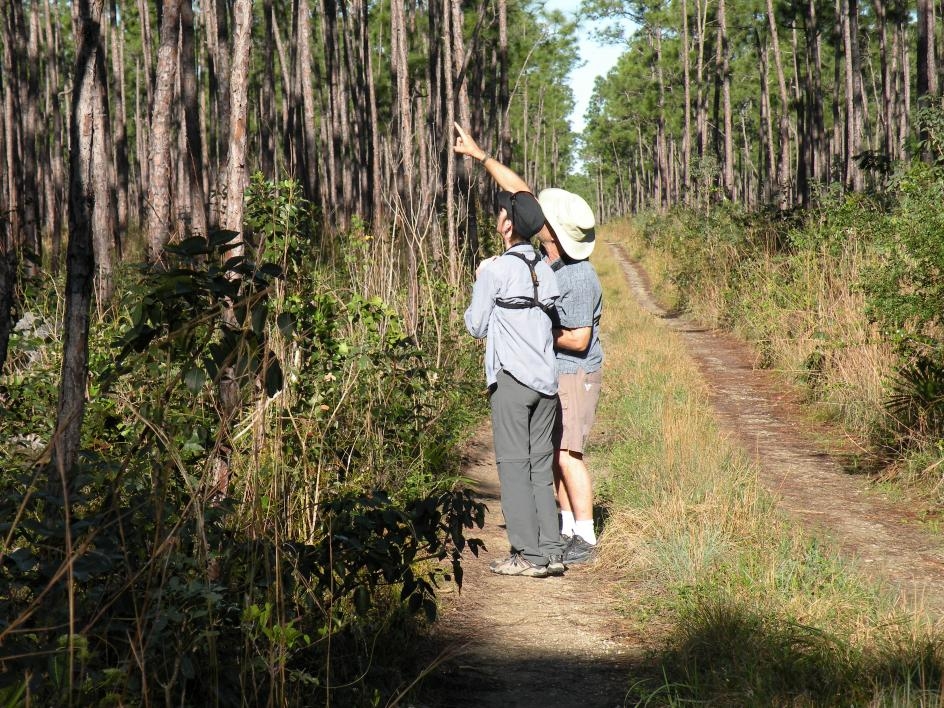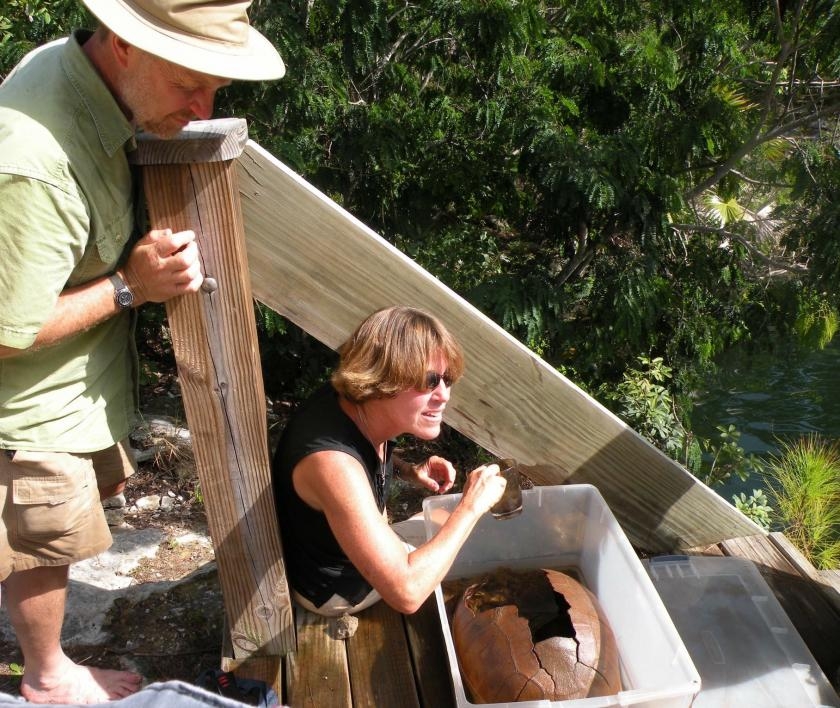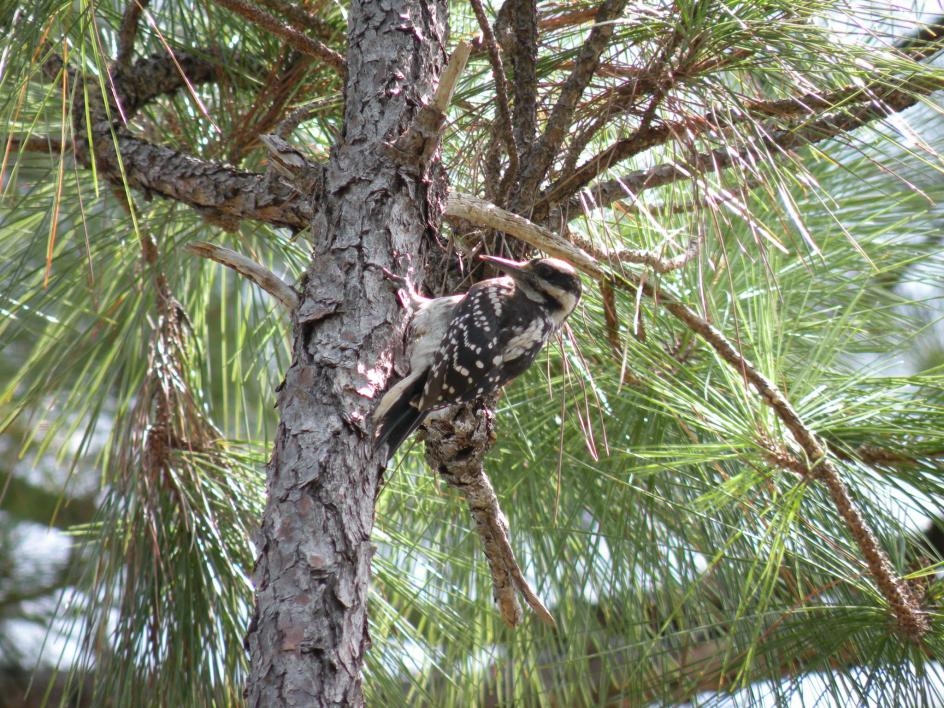Study: Human activity more deadly to species than natural climate change
ASU researcher, team examine fossil evidence from Caribbean sinkhole

An underwater fossil hoard discovered in the Caribbean has revealed that people have done more to deplete animal species than the shift of the last ice age.
A study co-authored by Janet Franklin, Regents’ Professor in the School of Geographical Sciences and Urban Planning at Arizona State University, and published this week in the Proceedings of the National Academy of Sciences deals with the relative impacts of climate change and direct human activity on animal-species extinction.
Sawmill Sink, a flooded sinkhole cave or “blue hole” on Abaco Island in the Bahamas, yielded 95 species of ice-age vertebrates, the most ever found on any Caribbean island. Thirty-nine of those species no longer exist on Abaco Island.
The warmer, wetter climate and rising sea levels that occurred from 15,000 to 9,000 years ago during the transition from the last ice age to the present climate probably led to the disappearance on Abaco of at least 17 species of birds — species characteristic of open habitats like pine woodlands and grasslands found on cooler, drier, larger ice-age Bahamian islands.
Although the 17 species of birds didn’t survive the ice age, 22 species of reptiles, birds and mammals did.
But they didn’t survive human beings. When people appeared on the island about 1,000 years ago and used fire to clear land for farming, those 22 species disappeared. Island species are particularly vulnerable to habitat loss because of the limited land area.

ASU Regents’ Professor Janet Franklin sits at Sawmill Sink, where fossils of 95 ice-age species were found. Top: The Bahama or rose-throated parrot, which has lived on Abaco since the last ice age.
Photos from Janet Franklin
Franklin was surprised how many species — especially of birds — stuck around the island even as the climate warmed and the islands shrank at the end of the ice age.
“We expected that there would be cooler-climate, open-country birds there in the last ice age that subsequently disappeared (went extinct or moved north), and we found that,” she said. “So that is a really cool finding, but we predicted it.
“It was dismaying to also find that, of those many species that are so adaptable they can live in the glacial or interglacial Bahamas, a whole bunch of them could not stand the pressures that accompanied people who arrived 1,000 years ago — namely the big changes in habitat that happen when people burn to clear land for farming.”
One of the biggest challenges is the speed of human-driven change. Natural climate change, such as the Earth warming from a passing ice age, takes thousands of years — a span of time that allows species to adapt, Franklin said.
“But human-caused climate change, caused by fossil-fuel burning and other greenhouse gasses emissions, only started in the 19th century and is really fast compared to natural climate change,” she said. “Species do not have a thousand years, or 10 or 100,000 years, to adjust, migrate, evolve.
“The same temperature changes are happening in 50 to 100 years, and on a planet where land is fragmented by farms, cities, etc. This makes it difficult for wildlife to adjust by migrating. How do they get there? Unless they can fly. Habitat connectivity is important in conservation planning.”
The fossil evidence from the Caribbean sinkhole the team studied shows how much more of an impact human presence had in a vastly shorter time.
“The … arrival of people probably depleted more animal populations than the dramatic physical and biological changes associated with the (ice age),” the paper’s authors wrote. They concluded that, even though human-caused climate change in the 21st century is much more rapid than natural glacial-interglacial cycles, “[f]or the species that remain, we believe that direct human activity threatens their immediate future more than climate change.”
Franklin’s research is focused on the impacts of human-caused landscape change, like forestry and urbanization, on the environment.
“Planning for biodiversity conservation should consider all ways humans use the land, in addition to human-caused climate change,” she said. “That is why it is so gratifying that the Bahamas has just established several new marine and land protected areas, including a national park that protects the caves where the fossils were found because of their scientific value.”
The Sawmill Sink team included:
- Lead author Dr. David Steadman, University of Florida, an expert on bird fossils. He assembled the group of experts needed to correctly identify almost 100 species from tiny bones.
- Brian Kakuk, another coauthor and expert cave diver who recovered most of the fossils. “Without his unique skills and fearlessness, we would not have such an amazing array of fossils to study,” Franklin said.
- Nancy Albury, vertebrate paleontologist with the National Museum of the Bahamas who has been working at the site for more than 10 years and facilitated the research in the Bahamas.
The Sawmill Sink project was sponsored by the National Science Foundation. NSF support also will allow the team to return to the Bahamas later this year to explore island caves, further researching how human presence affected survival of species.
The School of Geographical Sciences and Urban Planning is a unit of the ASU College of Liberal Arts and Sciences.
More Environment and sustainability

Barrett Honors College to host nature walks for science, relaxation
Barrett, The Honors College at Arizona State University is gearing up to participate in the City Nature Challenge (CNC) for the fourth consecutive year. This annual event, taking place April 26–29,…

Arizona adapting to heat crisis with initiatives featured in ASU report
Arizona State University's Knowledge Exchange for Resilience, also known as KER, released its Recommendations Report on Extreme Heat Preparedness earlier this April during a summit in the nation's…

Celebrating Earth Day around the world
Originating in the United States in 1970, Earth Day is now celebrated worldwide. But even before it became an official day, many countries were already mindful of their carbon footprint in their…



